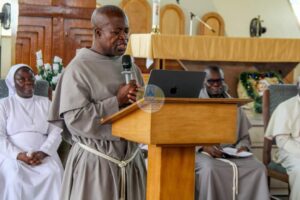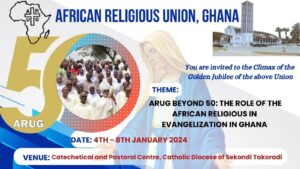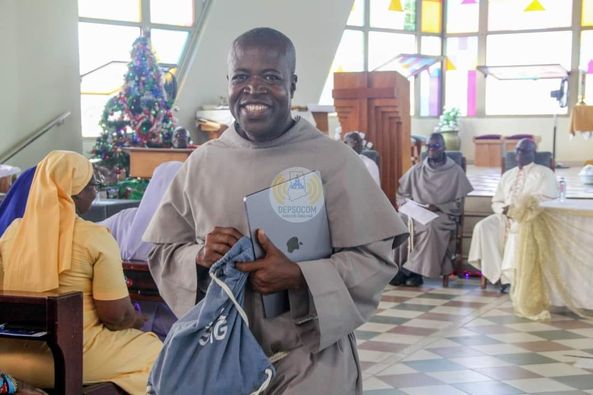A Ghanaian Franciscan Priest, Rev. Fr. Joseph Blay, OFM, has noted with concern the worrying trend revealed by Ghana’s 2021 Population and Housing Census showing a decline in the Catholic population vis-avis the phenomenal increase in Priests and Religious in the last 50.
As the keynote speaker at the opening of the Golden Jubilee climax of the African Religious Union of Ghana (ARUG) at Christ the King Catholic Church, Effiakuma in the Sekondi-Takoradi Diocese, he highlighted the remarkable contribution of indigenous Religious to the Church including two Bishops for Africa (Botswana & CAR), six Bishops for Ghana as well as many Generals and General Counsellors.
Drawing attention to the unsettling trend unveiled by the 2021 Population and Housing Census that showed a decline in the Catholic population against the remarkable increase in Priests and Religious in the last 50 years, Fr. Blay asked the question what are religious Men and Women not doing right?

This question was necessitated by the paradoxical growth of religion that is not reflected in the growth of Catholic numbers. He noted that the trend of a 2.5% loss of Catholics every 10 years is worrisome, adding that if not checked, there may be no Catholic in Ghana by 2060.
According to Vatican news, the number of Bishops and Priests is decreasing. There are 5,340 in the world, mostly Diocesan, with Religious Bishops decreasing as well. The total number of priests in the world decreased to around 407,872, a drop in 2,347 priests.
The continent which registered the largest decrease was again Europe, with 3,632 fewer priests. Increases were registered in Africa and in Asia (1,518 and 719, respectively).
Diocesan priests in the world decreased by 911, while religious priests decreased by 1,400. As the number of Priests decreases, the number of Catholics per Priest in the world increased, so in average there are 3,373 Catholics for every Priest in the world, a rise of 59 people per Priest.
Regarding women religious, there has been an overall decrease, with 10,588 fewer nuns. Here too Europe recorded the largest drop in consecrated women (7,804 fewer religious women).

Speaking on the theme, ARUG beyond 50: The role of the African Religious in Evangelisation in Ghana, Fr. Blay traced the historical trajectory that culminated in what is known as ARUG today, emphasising the search for African Religious identity and mutual support as the motivating factor while paying glowing tributes to the Pioneer Indigenous Religious.
He stressed that evangelization entails “Bringing the Good News into all strata of humanity and through it transforming humanity itself from within its criteria of discernment, its determinant values, its sources of inspiration, its designs for living, opening them up to a total vision of humanity.”
Fr. Blay outlined the numerous challenges facing the indigenous Religious as sustenance and self-reliance, family demands and expectations, knowledge and use of the vernacular, pentecostalism, and relationship with Diocesan Bishops.
He made several practical recommendations as a way forward, including the need for redefinition of the Union, consolidation of communion, direct pastoral involvement, relationship with Parish Priests, common social mitigation programs, as well as discipline and commitment.
In conclusion, Fr. Blay stated that to survive 50 years, testify to the relevance of ARUG stressing that though the achievements of ARUG are not tabulated, they are evident. He made a passionate appeal to the Major Superiors Conference of Ghana to help consolidate the achievements of ARUG and to solidify this union as a common forum for members of all institutes of consecrated life and apostolic societies to meet.
The opening ceremony was under the distinguished Chairmanship of Rev. Br. Prof. Michael Amakyi, CSC.
Source: DEPSOCOM SEKONDI-TAKORADI



